Cómo obtener la mejor iluminación en las videollamadas
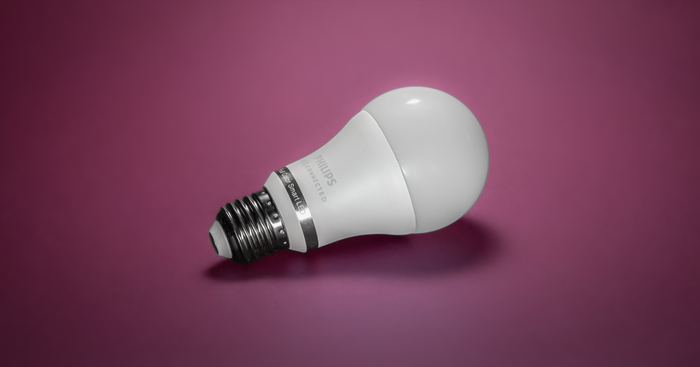
¿Quieres mejores luces para tus videollamadas? Nosotros también. En el pasado, hemos probado numerosas opciones de iluminación diferentes para ver qué funciona mejor cuando usamos Camo. Lo que hemos aprendido es que puedes obtener resultados fantásticos sin un presupuesto de producción profesional.
A diferencia de encontrar el mejor soporte para tu iPhone , que es bastante sencillo, lograr una buena iluminación es un poco más complicado e implica aprender un poco de teoría. Para obtener ayuda con esto, contactamos a la fotógrafa profesional Gia Goodrich para que nos hablara sobre las cualidades que hacen que una luz sea buena. Gia nos da una descripción general en el siguiente video.
Más allá de esto, el tipo de características que debes buscar en una luz depende del propósito de la luz. Para algo como una videollamada, es posible que desees incorporar varias luces, como lo hacemos en nuestro video de bombilla inteligente a continuación. Si observas la configuración de Gia en su video, sus tres zonas de luces son (1) la luz que la ilumina (la luz principal), (2) la luz que agrega un tono lila púrpura a su fondo (la luz de relleno) y (3) la luz amarilla mantecosa de la lámpara y la luz de tira (la luz de fondo).
En este artículo, nos centraremos principalmente en encontrar una buena luz principal (la luz que iluminará al sujeto, en el caso de las videollamadas, es decir, a ti). Por lo tanto, el fondo de muchas de estas imágenes ilustrativas es bastante oscuro y necesita iluminación adicional para completar realmente la escena. Aquí tienes más información de Gia sobre las luces de relleno.
Le hicimos muchas otras preguntas a Gia, por lo que seguiremos incluyendo el contexto y las explicaciones útiles que brindó a lo largo del artículo. Para obtener más consejos sobre cómo crear una buena configuración de iluminación, Gia tiene un canal de YouTube extremadamente útil dedicado a ayudar a los usuarios y creadores de videos de todos los niveles a crear buenas configuraciones de iluminación, en particular para problemas específicos de las videollamadas, como evitar el deslumbramiento de la iluminación cuando se usan anteojos .
Teniendo en cuenta los comentarios de Gia, tenemos un buen punto de partida para empezar a evaluar cada una de estas luces. En términos prácticos, por supuesto, el funcionamiento de una fuente de luz es solo una parte del rompecabezas a la hora de buscar una luz que funcione bien para las videollamadas, especialmente si trabajas desde casa. Una buena luz en esta situación también debe cumplir con otros criterios más prácticos.
Para evaluar estas luces haremos las siguientes preguntas:
¿Qué tan bien funciona como fuente de luz? ¿El color se ve natural y equilibrado con la luz del día? ¿O difumina el sujeto o le da demasiada calidez? ¿La iluminación es suave o dura? ¿Es lo suficientemente intensa?
¿Es práctico de usar? ¿Es fácil de configurar, encender y apagar para una persona sentada en un escritorio? ¿Cómo se controla y se alimenta? ¿Necesito cargarlo? ¿Puede sobrecalentarse? ¿Es ruidoso? ¿Es demasiado brillante?
¿Se adapta al espacio de mi casa? ¿Es demasiado grande para que quepa prácticamente en una oficina en casa? ¿Hay demasiados cables? ¿Puedo colocar la luz perfectamente? ¿Puedo moverla fácilmente?
¿Es rentable? Si es caro, ¿está justificado o hay alternativas más económicas que produzcan un efecto similar? Si es económico, ¿es probable que dure bastante o tendré que reemplazarlo rápidamente?
Le daremos a cada luz una puntuación de 5 para cada sección.
Productos probados
- Caja de luz
- Luces de vídeo USB
- Luz para llaves Elgato
- Bombillas LED inteligentes
- Anillo de luz Kodak
- Luces de juego Phillips Hue
Configuración
Aquí es donde probaremos la mayoría de las diferentes opciones de iluminación:
Como puedes ver en estas imágenes, hay ventanas detrás y a la derecha del escritorio. A la derecha, puedes ver cómo se ve la transmisión en Camo con esta configuración y sin iluminación adicional.
Hay mucha luz en la habitación, pero la posición de las dos ventanas dista mucho de ser ideal. La luz que viene de atrás hace que el sujeto parezca más oscuro que el fondo y la luz que viene de un lado crea sombras no deseadas en su rostro.
El primer paso, por tanto, es controlar la mayor cantidad posible de luz. Una opción sería simplemente trabajar con la luz girando el escritorio para que quede frente a una de las ventanas. Esa sería una buena fuente de luz en este día y a esta hora, pero estamos buscando algo que nos dé los mismos buenos resultados en cualquier momento del día o del año. También tenemos que comparar estas opciones desde el mismo punto de partida, lo que es difícil de hacer con la luz natural. Así que, veamos qué pueden hacer estas luces por sí solas.
Softbox
| Puntajes: Softbox | |
|---|---|
| Luz | 5 |
| Sentido práctico | 4 |
| Espacio | 1 |
| Económico | 4 |
Productos utilizados
Caja de luz Godox 95cm 37 "Caja de luz de nido de abeja octogonal $ 60
Las cajas de luz se utilizan para sets profesionales y ofrecen la mejor (y más favorecedora) luz de todas las opciones que probé debido a su tamaño. La cámara dentro de la caja de luz es bastante pequeña, pero las dos capas de difusión dentro de la caja crean una luz grande y suave que es lo suficientemente grande como para envolver suavemente todo lo que está en primer plano.
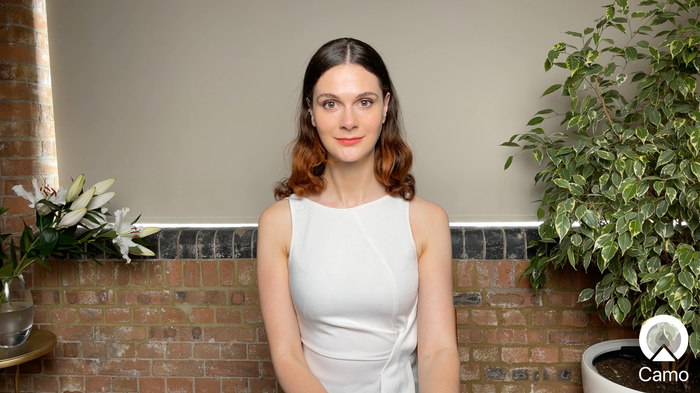
Colocamos la caja de luz directamente detrás y encima de nuestra cámara y luego la inclinamos hacia abajo para intentar crear un sutil efecto de iluminación Paramount. Parker Walbeck describe los cinco patrones de iluminación para retratos más populares en su video aquí.
La luz que produce el softbox es realmente hermosa. Es suave y favorecedora, y muy brillante sin causar incomodidad al sujeto. El color en este caso no se puede ajustar, pero está configurado a una buena temperatura de luz diurna, ni demasiado cálida ni demasiado fría. El brillo se puede ajustar y lo configuramos al 75 %.
Requiere un poco de montaje, pero si estás familiarizado con la estructura general de los paraguas, no tendrás ningún problema. Una vez que esté configurado, solo tienes que encenderlo y apagarlo con un interruptor en la parte posterior de la luz, y recordará tus últimos ajustes. Se enchufa a la red eléctrica, pero como está diseñado para usarse en sesiones profesionales, los controles de iluminación están en la parte posterior, por lo que no puedes ajustar el brillo desde tu escritorio. La luz tiene un ventilador para evitar el sobrecalentamiento, pero apenas es lo suficientemente fuerte como para escucharlo y no lo suficientemente fuerte como para que lo capten la mayoría de los micrófonos.
¿Es una opción práctica? Probablemente no para la mayoría de nosotros. Se trata de un equipo realmente enorme. La mayoría de los escritorios se colocan a ras de la pared, por lo que, salvo para montar una luz en el techo y alejarse del escritorio para las llamadas, no es algo que pueda usar fácilmente. Pero si tiene el espacio y desea la mejor iluminación disponible, esta es la solución.
El softbox que utilizamos está formado por tres secciones: la luz, la caja y el soporte, que, en conjunto, cuestan unos 300 dólares (220 libras esterlinas). Es caro para una luz de videoconferencia, pero para quienes necesitan la mejor luz, no es demasiado caro.
Luces de video USB
| Puntajes: luz de video USB | |
|---|---|
| Luz | 3 |
| Sentido práctico | 5 |
| Espacio | 5 |
| Económico | 5 |
Productos utilizados
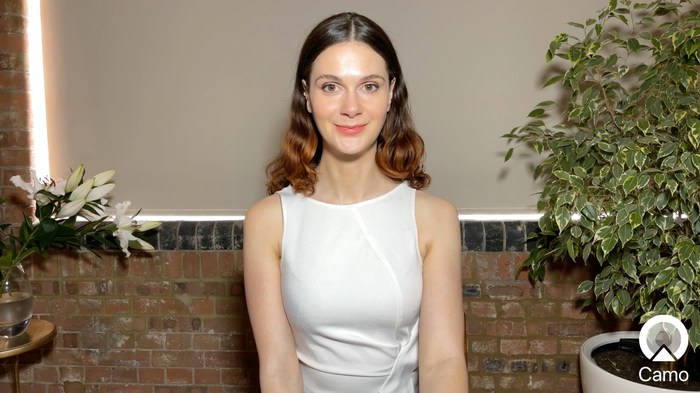
La luz vino en un paquete de dos , aunque solo estoy usando uno aquí. Puede conectar la luz a su computadora mediante un cable USB con un pequeño conjunto de controles que le permiten encender y apagar la luz y ajustar el brillo. Es una luz simple, pero la luz en sí parece bastante natural y es muy fácil de usar desde su escritorio. El soporte es extensible y se puede levantar bastante alto, lo cual es útil.
Si bien la luz viene con un filtro suavizante, este se encuentra tan cerca de la fuente de luz que no suaviza la luz de manera tan efectiva como el softbox. Puedes ver esto en la imagen de arriba, donde hay un mayor brillo en mi frente, así como sombras que las pequeñas fuentes de luz suelen producir. La luz intensa también está captando algunas imperfecciones en la piel.
Algunas otras desventajas: el cable no es muy largo y es un poco económico.
Dicho esto, para una opción que cuesta $ 45 (£ 32) por dos luces, es una opción bastante buena. Es brillante, el color de la luz es bueno, es compacto, ajustable y fácil de usar.
Luz de llave Elgato
| Puntajes: luz de la tecla Elgato | |
|---|---|
| Luz | 3 |
| Sentido práctico | 3 |
| Espacio | 4 |
| Económico | 2 |
Productos utilizados
Elgato key light air $ 130
Luz de llave Elgato $ 190
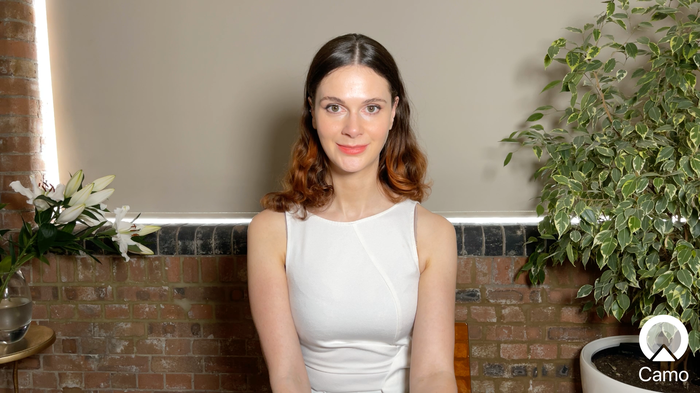
A continuación, probé la luz favorita de los streamers, las luces clave de Elgato . Si bien la calidad del soporte en sí es mucho mejor que la luz genérica probada anteriormente, la calidad de la luz es bastante similar. La luz de Elgato tiene el mismo problema que la luz genérica probada, que es que, si bien hace un esfuerzo por suavizar la luz, como la sección difusora está tan cerca de las bombillas, la luz es inevitablemente más dura que la luz de una caja de luz.
No disfrutamos de la experiencia con el software de Elgato y esperábamos que por el precio funcionara con HomeKit, pero no es así. Los problemas de software parecen agravarse al intentar cambiar entre las dos luces, por lo que la luz más grande parece más cálida en las tomas (podríamos haber solucionado esto con algo de tiempo buscando en Google y probando varias cosas, pero parecía un poco complicado). Desde una perspectiva práctica, la luz genérica mucho menos sofisticada con controles en el cable funcionó mejor. Dicho esto, el concepto de poder ajustar el nivel de luz y la temperatura desde el monitor es bueno.
Las luces Elgato pequeñas y grandes se venden por poco más de 100 dólares (100 libras esterlinas) y poco menos de 200 dólares (200 libras esterlinas) respectivamente. No estamos seguros de por qué la versión un poco más grande cuesta casi el doble, ya que no parece funcionar de manera muy diferente.
Otras cosas que no nos gustaron: el cable no es muy largo, el soporte es bastante tosco y difícil de mover, especialmente porque está diseñado para usarse detrás de monitores.
Bombillas LED inteligentes
| Puntuaciones: Bombillas LED inteligentes | |
|---|---|
| Luz | 4 |
| Sentido práctico | 4 |
| Espacio | 5 |
| Rentable | 5 |
Productos utilizados
- Bombillas LED inteligentes Philips de 8 W 11,99 £ cada una
¿Qué pasa si realmente no quieres comprar más cosas?
Hace un tiempo, probamos una lámpara básica de brazo articulado y una bombilla común y corriente para ver cómo se comparaba con las opciones más profesionales que se muestran aquí. La respuesta: no tan bien, aunque era un poco mejor que el anillo de luz Kodak que también probamos para esta guía. Sin embargo, desde entonces, hemos probado varias configuraciones diferentes utilizando lámparas domésticas que ya teníamos y descubrimos que podíamos lograr resultados fantásticos utilizando solo tres bombillas LED inteligentes programables. Así es como lo logramos.
El hecho de que esta configuración de iluminación cueste mucho menos que la mayoría de las otras alternativas que se mencionan aquí, y al mismo tiempo sea la más fácil de instalar y controlar, coloca a estas bombillas en un lugar destacado de nuestra lista de recomendaciones de iluminación. Es posible que sus estadísticas de lúmenes no sean tan impresionantes como las de la iluminación profesional que probamos, pero si se colocan lo suficientemente cerca del sujeto, emiten todo lo que se necesita para obtener una imagen nítida y clara de una buena cámara web, un teléfono o una cámara sin espejo (ninguna de ellas estaba a plena potencia en el video).
Quizás lo único que evita que esta opción se lleve por completo el premio mayor es que las versiones compatibles con Homekit son aproximadamente tres veces más caras y el hecho de que no todo el mundo puede tener tantas lámparas a mano como las que encontramos en nuestra oficina de prueba. Las lámparas utilizadas en el vídeo se compraron todas en eBay, pero si no tienes tiempo para ir a buscarlas en subastas, puedes lograr el mismo resultado con un par de lámparas de trabajo económicas y una lámpara de mesa luminosa. Construir todo este sistema desde cero (tres bombillas inteligentes y tres lámparas) costará un total de 79 libras en el Reino Unido y 100 dólares en los EE. UU.
Anillo de luz Kodak
| Puntuaciones: anillo de luz Kodak | |
|---|---|
| Luz | 2 |
| Sentido práctico | 2 |
| Espacio | 2 |
| Económico | 1 |
Productos utilizados
- Anillo de luz Kodak $ 130
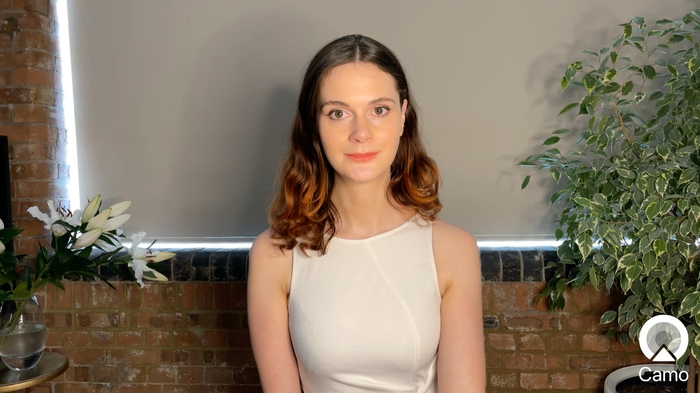
Las luces de anillo parecen haberse ganado de alguna manera la reputación de ser la luz perfecta para usar con su teléfono y en videollamadas, hasta el punto de que, si camina por una ciudad como Londres y mira a través de las ventanas (si es el tipo de persona que hace eso), es tan probable que vea un anillo de luz como un plato de fruta.
Sin embargo, en términos generales, las luces de anillo prácticamente no son tan buenas. Aquí está Gia explicando por qué:
Probamos un anillo de luz Kodak, que era una de las opciones más caras. Venía en un estuche que incluía un soporte para teléfono que parecía prometedor para reducir la cantidad de espacio necesario en el escritorio.
Esta fue definitivamente la peor luz que probé. La luz simplemente no era lo suficientemente fuerte y, si bien puedes cambiar entre tres colores de luz preestablecidos, incluso la opción "neutral" parecía un poco demasiado cálida. Puedes ver que la imagen de nuestra transmisión de Camo no es tan nítida como la mayoría de las otras opciones, ya que la luz simplemente no arroja suficiente luz sobre la escena.
Desde un punto de vista práctico, esta luz es exasperante. Si bien el soporte para teléfono significa que no necesita un soporte separado para su teléfono, las patas se niegan a hacer nada más que extenderse, ocupando una gran cantidad de espacio en el escritorio.
El soporte no se extiende muy alto, lo cual no es tan malo cuando lo usa con una computadora portátil, pero usarlo con un monitor más grande cortaría la mitad de la luz.
Veredicto
| Puntuaciones finales | |
|---|---|
| Caja de luz | 14 |
| Luces de vídeo USB | 18 |
| Luces para llaves Elgato | 12 |
| Bombillas LED inteligentes con Wi-Fi | 18 |
| Anillo de luz Kodak | 7 |
Para espacios y presupuestos más reducidos, tanto las bombillas USB como las inteligentes fueron excelentes opciones. Si tienes dos o más lámparas en tu espacio de trabajo, te recomendamos encarecidamente equiparlas con bombillas inteligentes, colocarlas en posiciones clave y de relleno, y configurarlas con la temperatura de luz natural y niveles de brillo complementarios cuando vayas a grabar un vídeo. Si tu espacio no es tan adecuado para las lámparas, usar un par de LED alimentados por USB mejorará la iluminación para las videollamadas y ocupará un espacio mínimo en tu espacio. Ambas opciones se pueden encender y apagar y ajustar fácilmente desde un escritorio.
Luces adicionales
Productos utilizados
Hue juega $ 150 por 2
Tira de tono $ 80
Aunque aquí nos hemos quedado principalmente con las luces principales, teníamos algunas otras luces que pensamos que podríamos probar como luces de relleno. Aquí tienes un vistazo rápido y sencillo al uso de otras luces en tu escena para crear una configuración de iluminación más interesante para las videollamadas.
Una vez que haya resuelto su luz clave, puede seguir para ver cómo agregar más capas de luz.
Si bien nuestra escena está bien, es un poco aburrida. También está el problema de que el cabello anaranjado del sujeto no se distingue demasiado de los ladrillos anaranjados, y hay mucho color crema en la toma. Para equilibrar esto, usamos algunas luces Hue Play y una tira de luz para agregar más naranja a los ladrillos, y colocamos una luz rosa casi directamente detrás del sujeto para darle un poco de rosa a su lado izquierdo. Como notamos antes, las bombillas LED como Hue son realmente fáciles de controlar y ajustar desde el teléfono, y configuramos esta escena en un par de minutos.
Con un poco más de tiempo, podrías pensar un poco más críticamente sobre dónde podrías querer colocar luces y por qué. Lo ideal es que cada capa de luz que agregues tenga algún tipo de propósito, por ejemplo, podrías querer crear una mayor distinción entre tú y el fondo (como hizo Gia en sus videos al usar un color contrastante detrás de ella), agregar algo de interés visual a tu escena o quitar sombras de tu rostro y debajo de tu barbilla.
Si quieres que veamos otras luces, o si tienes otros consejos para ayudarme a conseguir una mejor configuración de iluminación, háznoslo saber en los comentarios a continuación (o envíanos un tweet a @reincubate ).


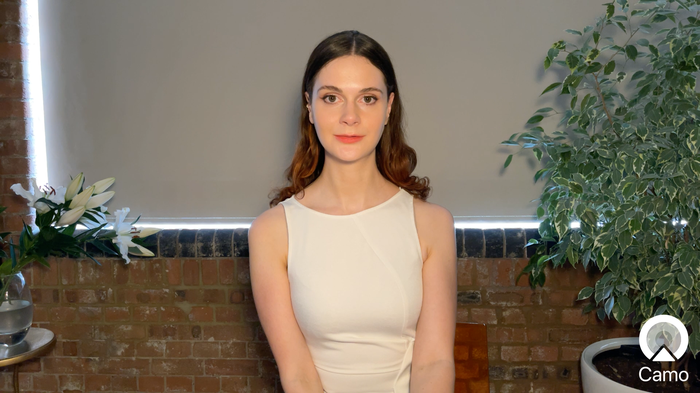
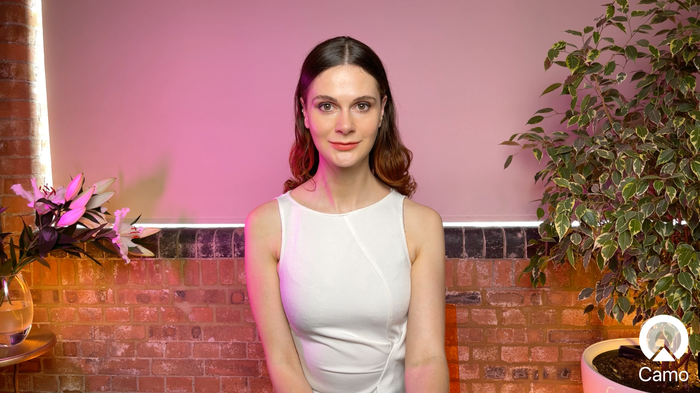










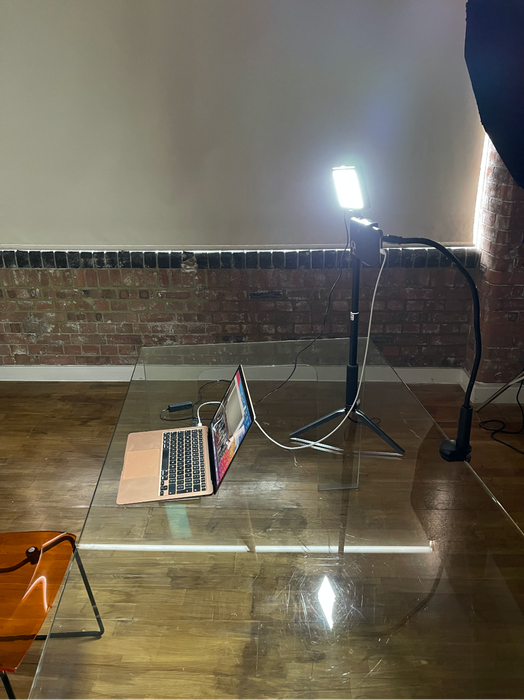




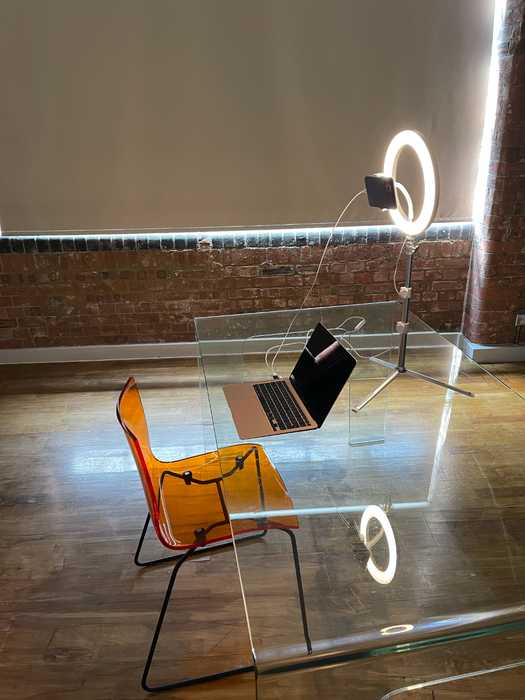


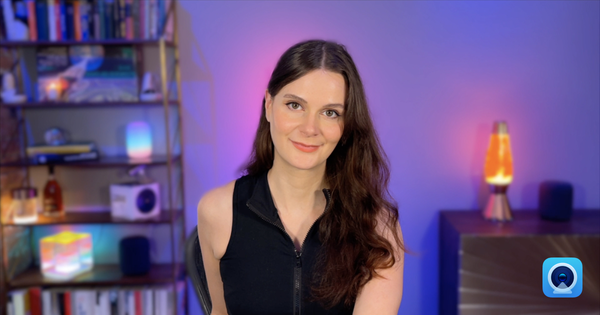
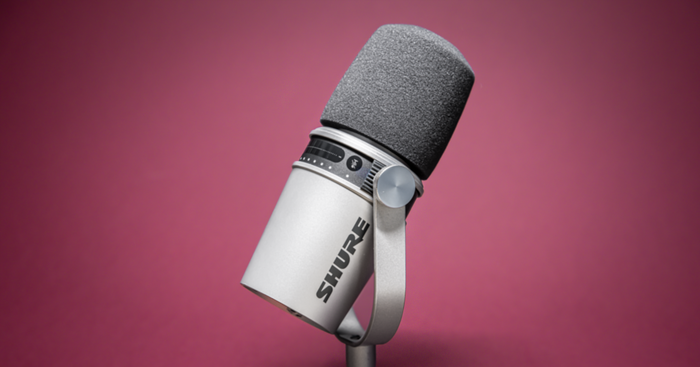
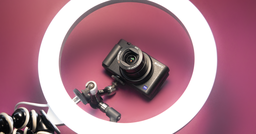
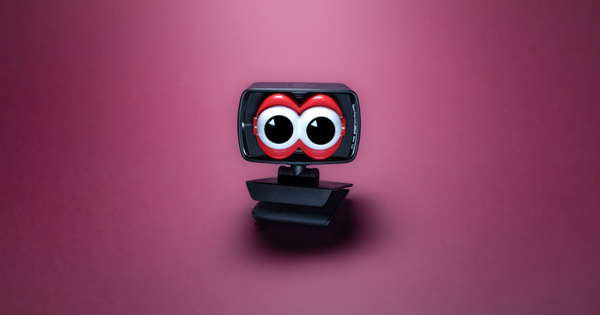
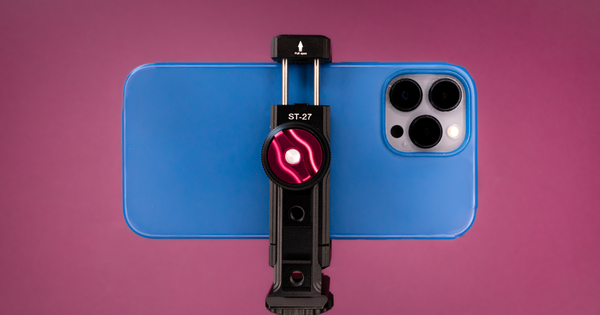

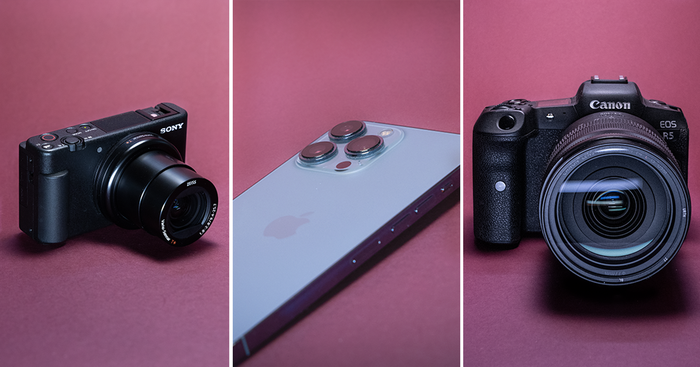
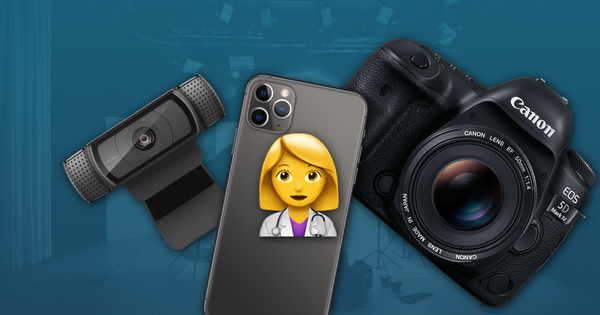
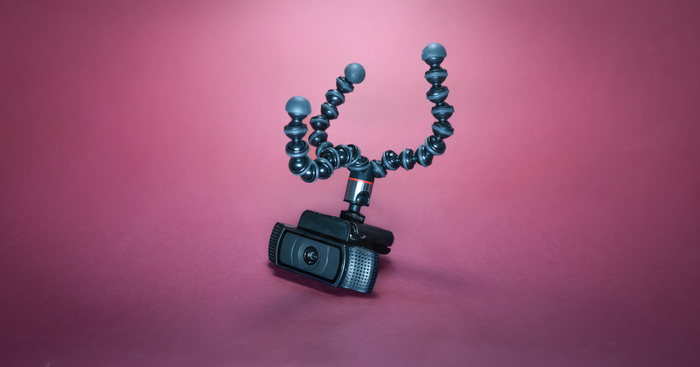
por Frank Kafka
Great article, but next time use a regular person for the photos and not a supermodel.
responder por: Reincubate Support
Scarlet says thank you!